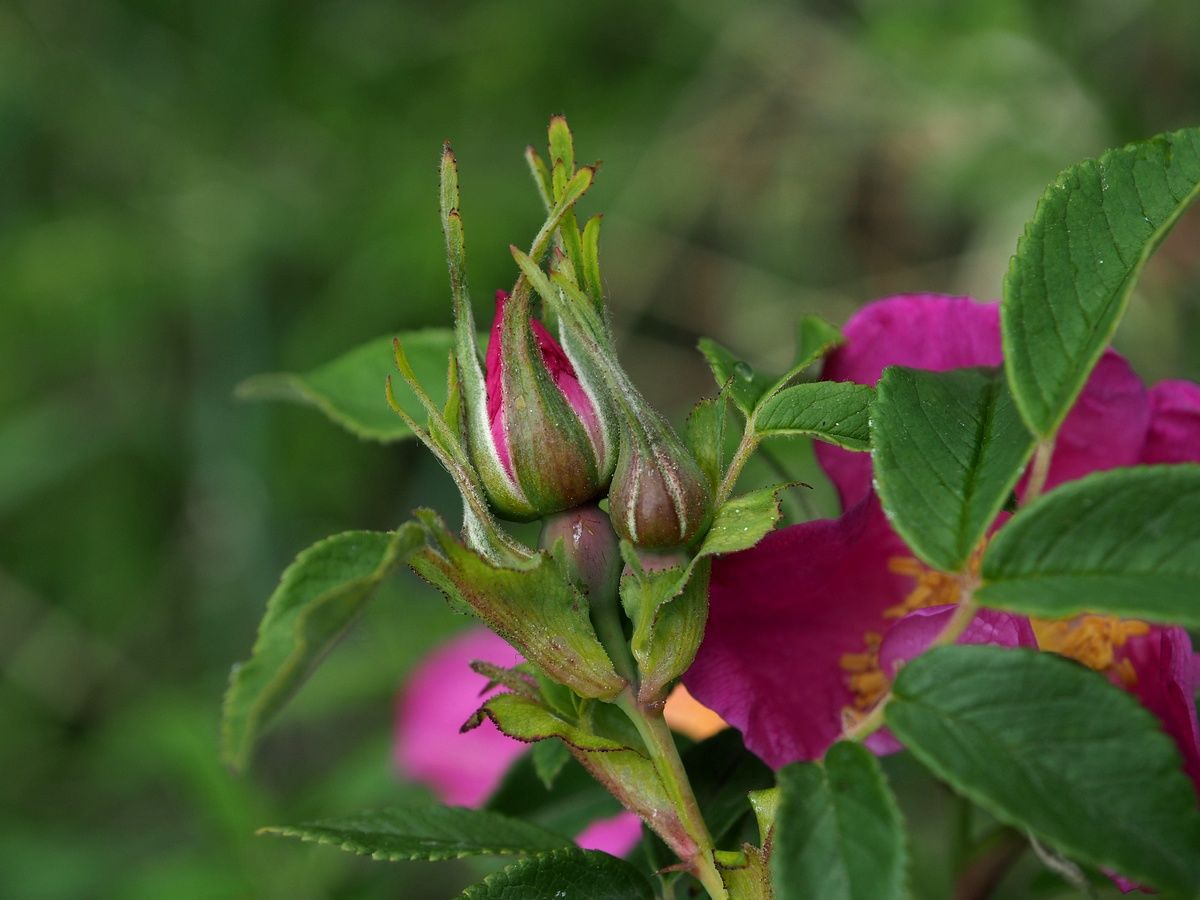Family: Rosaceae
Author: Pall.
Bibliography: Fl. Ross. 1: 61 (1788)
Year: 1788
Status: accepted
Rank: species
Genus: Rosa
Vegetable: False
Observations: Suberia to Russian Far East and Korea
Description
The Amur rose, scientifically known as Rosa davurica, is a captivating plant species that belongs to the Rosaceae family. This resilient and beautifully flowering shrub finds its natural habitat in the regions extending from Siberia to the Russian Far East and Korea. First documented in “Flora Rossica” (1788) by the distinguished naturalist Pall., the Amur rose has intrigued botanists and plant enthusiasts for centuries due to its adaptability and charming appearance.
Characterized by its sturdy, thorn-laden stems and striking blooms, Rosa davurica typically flourishes in temperate climates, showcasing clusters of delicate pink or white flowers during its blooming period. The flowers, with their subtle, sweet fragrance, attract a variety of pollinators, making this rose not only an aesthetic delight but also an essential component of the local ecosystems where it thrives.
The foliage of the Amur rose is another notable feature, presenting an appealing contrast with its dark green, glossy leaves. These leaves are pinnate, usually bearing five to seven leaflets, each with finely serrated edges. This detailed leaf structure not only adds to the plant’s ornamental value but also provides an interesting study subject for those interested in botanical morphology.
Rosa davurica is well-adapted to withstand the cold winters and variable climate conditions of its native regions. It is commonly found in moist areas, thriving along riverbanks, and in forest clearings where the soil is well-drained. Its hardiness makes it a valuable plant for landscaping in areas with similar climatic conditions across the world.
Due to its historical and horticultural significance, the Amur rose continues to be a focus of botanical studies and conservation efforts. Its long-standing presence in the botanical literature speaks to its enduring allure and ecological importance. Whether admired for its beauty or studied for its resilience, the Amur rose remains a remarkable representative of the diverse and rich Rosaceae family.
Common Names
Eng: amur rose
Pol: róża dahurska
Swe: taigaros, tajgaros
Nob: taigarose
Nno: taigarose
En: Amur rose
Zh: Shan ci mei
Fi: Taiganruusu, Taigaruusu
Nb: Taigarose
Nn: Taigarose
Pl: Róża dahurska
Sv: Taigaros, Tajgaros
Synonyms
- Rosa cinnamomea var. davurica ((Pall.) Rupr.)
Distribution
- Amur (native)
- Buryatiya (native)
- China North-Central (native)
- Chita (native)
- Inner Mongolia (native)
- Irkutsk (native)
- Japan (native)
- Kamchatka (native)
- Khabarovsk (native)
- Korea (native)
- Manchuria (native)
- Mongolia (native)
- Primorye (native)
- Sakhalin (native)
- Yakutskiya (native)
- Poland (introduced)
Additional Images

© copyright of the Board of Trustees of the Royal Botanic Gardens, Kew.

© copyright of the Board of Trustees of the Royal Botanic Gardens, Kew.

© copyright of the Board of Trustees of the Royal Botanic Gardens, Kew.
Flower
Taken Jun 27, 2020 by Dieter Albrecht (cc-by-sa)
Fruit
Taken Jun 27, 2020 by Dieter Albrecht (cc-by-sa)
Leaf
Taken Jun 27, 2020 by Dieter Albrecht (cc-by-sa)
Habit
Taken Jun 27, 2020 by Dieter Albrecht (cc-by-sa)
Sources
- WFO (No URL)
- WFO (No URL)
- IPNI (No URL)
- GBIF (https://www.gbif.org/species/3007090)
- POWO (http://powo.science.kew.org/taxon/urn:lsid:ipni.org:names:732243-1)
- PlantNet (https://identify.plantnet.org/species/the-plant-list/Rosa davurica Pall.)




